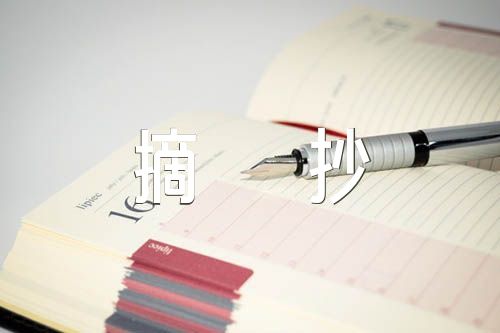【www.anne5.com--文摘大全】

《Leftover Women》是一本由Leta Hong Fincher著作,Zed Books出版的Paperback图书,本书定价:USD 26.95,页数:213,特精心从网络上整理的一些读者的读后感,希望对大家能有帮助。
《Leftover Women》读后感(一):书评:《剩女”:性别不平等在中国重新抬头》(中文翻译)
这篇书评的英文版是我写的,首发于LSE Review of Books。由“新媒体女性”翻译成中文,并被“译言”转载。
Leta Hong Fincher在北京的清华大学攻读社会学博士学位之前,是名记者。本书是以她的博士研究项目 – 尚未被充分研究的“剩女”和中国的房地产市场以及性别不平等之间的关联 – 为基础的。Fincher此前曾为纽约时报,CNN以及Ms杂志撰写过文章讨论类似的议题,而这些话题也由此得到了不少的关注。大量的采访引述和新鲜的媒体报道使得这本书可读性很高,有潜力吸引广大读者。
根据Fincher的说法,在中国,“剩女”一词被“广泛用来形容一位快三十岁或以上的单身都市职业女性”(引自书中第2页,下同)。在第一章里,Fincher检视了剩女这一话语是如何通过“官媒新闻报道,调查,专栏,漫画和电视节目”(第15页)而形成的,并指出了国家宣传“剩女”话语的两大原因:一是为了维护社会稳定。由于长期处于性别比例不平衡的状态,很多中国男人找不到老婆。在中国,小于20岁的男性的人数比同年龄女性女性多3200万。二是为了通过对受过良好教育的女性的逼婚,提高人口“素质”。这一观察的确十分深刻。国家暗地里帮助和推动传播侮辱性的“剩女”话语,而这一话语可以说对25岁以上的未婚女性产生了深远的影响。
第二章指出了中国女性是如何为了避免被“剩下”而经常“在婚姻里放弃了太多协商权”(第12页),从而导致她们被“排除在可能是历史上最大的民用房地产财富积累之外”。第三章进一步指出许多父母“通过只买房给他们的儿子这一行为表现了对他们自己的女儿的歧视”,从而导致房地产市场的性别财富差距。
本书语言风格通俗易懂,普通读者也可以理解这个论题。同时,本书采取了一种包容性的方式,涵盖了一系列与女性的财产权相关的议题,包括第三章和第六章探讨的LGBT群体的利益,以及第五章探讨的家庭暴力和女性财产权缺失之间的关系。在中国,每当涉及性别不平等时,这些议题很少会被放到一起讨论,因此作者在这点所做到的成绩值得赞许。
然而,我发现在某些地方,文章所提供的论据不足以支撑其提出的论点。例如,读者们会看到这样一个案例:一名大学毕业的女性被访者称其放弃了工作只因为“她想让自己更容易嫁出去,不再吓跑可能的结婚对象”。文中直接引用了她的话:“我最重要的任务就是要找个好男人嫁了”(第39页)。作者分析这一案例时写道:“官媒关于‘剩女’的宣传使得一些受过高等教育的女性甚至在结婚之前就辞去了工作”(第39页)。除了对于这一案例是否具有普遍性抱有疑问,我觉得分析和引用之间并不具有逻辑关系,因为这名被访者并没有明确指出她受到了“剩女”话语的影响。
这种分析的不严谨在第三章也有所体现。作者指出被访者尚小姐(音译)结婚的原因是她觉得她变老了。而作者将尚小姐的焦虑和“‘剩女’的年龄门槛”(第107页)联系在了一起。再一次地,被访者并没有明确指出她的焦虑和官媒宣扬的“剩女”准入年龄有什么联系。通过将“剩女”话语当做解释的“万金油”来使用,可以说作者不仅夸大了“剩女”话语对女性的影响力,而且忽略了引起她们焦虑背后错综复杂的原因。我们很容易发现,未婚女性关于年龄渐长的焦虑在“剩女”话语出现前就已经存在,而且这种焦虑在其他并没有出现“剩女”话语的国家也存在。
作者引用了相当数量的网上资源来支撑她的论点,让文章看起来运用了各方各面的资源。但是,Fincher并没有点到这些资源或许不是完全可信的。在第二章,作者引用了2012零点指标的数据和凤凰网的报道,指出只有30%的女性在她们婚房的房产证上写了名字(第46页)。首先,对于这份报道的可信度,我持怀疑态度,因为它并没有说明一共有多少受访者,也没有说明是通过什么方法进行的调查。再者,十分遗憾的是,作者并没有提到这份报道显示的一个趋势,即房产证也写上女方名字的数量和2006年相比上涨了10.2%,这可以解释为女性财产权的上升。
虽然全篇引人深思的论点不断,我还是觉得文中有些发现在本质上是矛盾的。例如,在第三章里,Fincher讲述了生女儿的父母“通常拒绝给自己女儿买房提供帮助”(第78页)。作者认为这是因为父母觉得买房是男人的责任(第83页)。然而,作者又发现许多女性会贡献自己的全部积蓄去帮助她们的伴侣买房子,即使房产证上没有她们的名字。“女儿”们的行为和父母们关于买房是男人的责任的观念大相径庭。考虑到作者还提到的女儿对其父母的孝顺(第82页),我不得不好奇父母们是如何看待他们的女儿贡献了全部积蓄却没能拥有财产权?这一行为有没有引起任何代际冲突?遗憾的是,本书并没有提及这些问题。
最后,本书标题中“重新出现”一词,在这一情境下显得有些问题。正如在本书序言部分提到的,本书“认为有官方背景的媒体对‘剩女’的宣扬是后社会主义中国性别不平等重新出现的表现之一”(第3页)。这里“重新出现”暗示了性别平等曾经得以实现。我认为性别平等从未实现并且性别不平等在中国历史上一直存在(更多信息请阅读Hui-Chen Wang Liu, Elisabeth Croll,和Judith Stacey的相关书籍)。Fincher通过引述宋朝(公元960-1279年)时期女人“对财产有着持续和独立的控制和拥有权”来支撑“重新出现”这一观点。然后她把宋朝女人和当代中国女人进行比较,声称“中国女人的财产权在后社会主义的城市化进程中被逐步侵蚀了”(第131页)。她把当代中国女人和一千年前的女人对比的方法是有问题的。虽然作者引用了历史学家Kathryn Bernhardt的研究,但她似乎忽视了Bernhardt的结论:宋朝根本就没有“财产平分法”,而且也确实不可能有。相反,父系继承的原则倒是一直沿用,而女性只有在家里无子无兄弟的情况下享有继承权(第8页)。此外,由于在讨论财产权时几乎没有考虑过相对应时期的社会经济情境,第四章的讨论显得过于简化。
中国媒体和公众目前的主导话语聚焦于女性如何谋划着分文不出或者只出很少的钱就能在房产证上写上自己名字。本书致力于通过讨论女性是如何被迫在房地产市场处于弱势来逆转上述话语。通过使“剩女”话语和房地产市场相互关联,作者想要提出一个新方法来论证在当代中国女性是如何处于弱势的。遗憾的是,由于过于简单化的讨论方式,不太站得住脚的论据,以及没有充分论证支撑的论点,本书的目的并没有实现。
总之,本书似乎颇具争议。即便如此,由于新颖的题材,作者吸引眼球的论点,和作者已有的名气,无论本书的观点有多片面,它仍有可能成为畅销书。还是得说,作者将很少讨论的一些议题,包括女性的财产权,LGBT群体的权利,和家庭暴力,放到一起研究这一点是很值得认可的。
转自http://select.yeeyan.org/view/432839/407288
《Leftover Women》读后感(二):惊天大阴谋
本书不厌其烦地拿新华社和妇联网站上的文章举例,试图证明我朝利用宣传机器大力推销“剩女”这个概念,从而制造一个有压力的社会舆论环境,促使女性及早/仓促/草率地进入婚姻。
这样做的目的在于让人及早结婚,这样有利于社会“稳定”。
我和作者都认为“剩女”这个词是一种歧视性语言,“剩”本身就有被挑剩下的意思,而对应的英文“leftover”干脆就有剩饭剩菜的意思。
所以我觉得“剩女”这个词是很不礼貌的,所以我从来不使用这个词去称呼女性。
倒是有很多人大学刚毕业就急急忙忙的把自己归为“剩女”了。
实际上跟亚洲其它发达国家比中国的女性已经结婚的够早的了,对于一些受教育程度高,经济较为独立的女性不结婚都不稀奇,因为这个世界丰富多彩,婚姻并不是人生唯一的意义,它甚至没有你想的那么重要。当然在中国年纪大没结婚的人生被认为是非常失败的,学历高而晚婚更是要被以极为异样的眼光看待。
我朝通过操纵舆论,通过电视剧真是恨不得把每个人都逼成结婚狂才高兴。
但是洪理达举例子举的太多看的我都烦了。
后面几章讲了一下房产,其中一个例子说河南有的父母宁可帮自己的侄子买房子也不愿意资助自己的女儿买房子,重男轻女到这种程度,简直闻所未闻。
后面还有一章讲家庭暴力的,我没仔细看。
对了,作者说根据中国夸张的男女出生比,中国人应该关心的是数以千万计的“剩男”问题,而不是通过鼓吹“剩女”的概念让未婚女性坐立不安。
我一直也是这么想的,中国明明是男的比女的多,再怎么鼓吹女的老了不值钱中国还是男的比女的多,多很多。
最后我觉得一个人即使不急着结婚但也不应该耽误谈恋爱吧,网上有些文章一方面把婚姻这东西贬得一无是处,一方面又大讲一个人也可以过得多好。
但是谁说不结婚就得一个人了?
《Leftover Women》读后感(三):You can't fight a propaganda with a propaganda.
What I fail to see is how this book has lived up to its own claims.
1). The title is slightly misleading: The "resurgence" of gender inequality is clearly nowhere to be seen. The author spend the final two chapters to briefly talk about the seemingly equality achieved in the early years of China"s Great Leap Forward but also concluded (reasonably) that such apparent equality was based on more deeply divided inequality with women shouldering up more burdens both at home and at work.
If such an argument is to hold, where is the "resurgence?". To have an resurgence of inequality you should first see, by definition, a period of diminishing inequality in the first place.
It seems that the only period where the inequality has diminished is during the Song dynasty (from 960 onwards) but then in such a context the resurgence has long overdue (the author herself argued such a resurgence happened arguably in the Ming dynasty, where nephews took precedence over daughters in inheritance)
The book presented gender inequality as a persistent theme, but the "resurgence" is nowhere to be seen. "Resurgence" to me seems to be used solely for the purpose of gaining attention at the wrong expense of credibility of study.
2). Selective quotation is everywhere. The adaptation of the original Horizon study by the author was evident, particularly on how she failed to discuss the figure where majority (around 70% if I remembered correctly) of men have paid the full down payment for property purchases.
This does not justify the claim of patriarchal hegemony, and should not be understood in such a way, but completely ignoring such an argument would be only to fool ourselves from understanding a more critical issue: the socio-economic imbalance of modern women in China, which of course wasn"t dealt adequately in this book.
3). This book is rife with simple explanations to complex problems, including a very shallow understanding on purchases and financing of real estate properties by parents for their daughters (since this is a major topic undertaken by the author). There is no awareness of historical context or precedent works in this field. I would see more secondary sources to back up some of the perceptions the authors made in this book, as these are often overly simplified.
The author sometimes also took a patronising stance, which is fine because it should be purely confined to a matter of style of writing and should not constitute an argument to refute the facts presented in this book. But what is worth noting is that whether the author has paid enough attention to confirmation bias, as she has often approached the subjects with a set agenda in mind. It is also worrying that none of the transcripts for interviews were included in the appendix. In one of her critiques on a survey on Leju by sina.com, the author made the right argument to say that how questions are phrased is going to exert substantial influence on the responses gathered, yet how she herself has avoided this issue wasn"t adequately discussed.
It is also worth noting that the sample of interviewees were rather worryingly homogenous, as the author has not randomly selected samples but approached through weibo where the target audience has expressed interests in her study. This is worrying as the self selection bias could well feed into certain types of responses, as exemplified by the transcripts excerpts many of the subjects interviewed came to the project with relatively strong but rather homogenous views on the issue at hand. Would it be more beneficial to interview more representative sample?
On a concluding note, this is an important topic and indeed one that is worth writing on. The author has shown tremendous courage to approach many sides on this issue, but the depth of the thinking is lacking nor is a desire to reference extensively seen in this work. Key texts remained in many chapters to be confined to one or two studies done by commercial estate agents or websites, whose integrity are not verified. Understandably undertaking such a study in China is going to be ultimately a tedious work on the respect of data, but that should not constitute an excuse to cherry pick what data to include and what not, nor a good gesture to take many data on their face value while downplaying other data on the basis of their credibility just because they don"t support your argument.
One final word: You cannot fight a propaganda with another propaganda.
《Leftover Women》读后感(四):《中国剩女 》书评,首发于LSE Review of Books
Leta Hong Fincher was a journalist before completing a PhD in Sociology at Beijing’s Tsinghua University. This book is based on her PhD project on the under-researched connections between leftover women, China’s property market, and gender inequality. Fincher has previously written articles discussing similar issues for the New York Times, CNN, and Ms. Magazine, through which these topics have already gained some popularity. With an abundance of interview quotes and contemporaneous media reports, this book is quite readable and has the potential to attract a wide audience.
According to Fincher, the term ‘leftover woman’ in China ‘is widely used to describe an urban, professional female in her late twenties or older who is still single’ (p.2). In Chapter 1, Fincher examines the leftover women discourse mediated through ‘state media news reports, surveys, columns, cartoons and television shows’ (p.15), and argues that two reasons account for the state promoting the leftover women discourse: one is to maintain social stability in the context of the persisting sex ratio imbalance – China has 32million more men aged under 20 than women – that prevents a lot of men from finding wives; the other is to upgrade the ‘quality’ of the populace by urging well-educated women to marry. It is an insightful observation indeed that the state serves as a latent driver, disseminating this stigmatizing ‘leftover’ women discourse, which arguably has a profound impact on unmarried women over the age of 25.
Chapter 2 considers how Chinese women have been ‘shut out of arguably the biggest accumulation of residential real-estate wealth in history’ because the pressure they experience in trying to avoid becoming ‘leftover’ means that they often ‘give up too much bargaining power within the marriage’ (p.12). Chapter 3 further deals with how ‘many parents discriminate against their own daughters by buying expensive homes for their sons only’, leading to a gendered wealth gap in house buying.
The book is written in an accessible style, allowing general readers access to the subject. It also adopts an inclusive approach in that it covers a wide range of issues in relation to women’s property rights, including the rights of LGBT groups in Chapter 3 and Chapter 6, and the relationship between domestic abuse and women’s lack of property rights in Chapter 5. These issues are rarely discussed together when considering gender inequality in China, so the author is to be congratulated for this effort.
Girl in Beijing. Credit: Ernie CC BY 2.0
However, I did find that in places the evidence provided is insufficient to support the arguments presented. For example, readers are introduced to a female informant who has a university degree but left her job because ‘she wanted to make herself a more attractive marriage candidate, less intimidating to suitors’. She is quoted as saying “my most important duty is to find a good man to marry” (p.39). The author analyses the case by noting that ‘the state media campaign regarding “leftover” women has prompted some highly educated women to quit their jobs even before they get married’ (p.39). Aside from questioning how rare this case is, I find a lack of coherence between the analysis and the quotes as the informant did not explicitly suggest that she was influenced by the ‘leftover’ discourse.
The imprecision in analysis can also be identified in Chapter 3. The author reveals that the informant Shang got married because she believed that she was getting older. The author links her anxiety with ‘the “leftover” women age threshold’ (p.107). Again, the informant did not specify the connection between her anxiety and the prescribed age of ‘leftover’ women advocated by the state media. By adopting the ‘leftover’ women discourse in a one-size-fits-all fashion, it can be argued that the author not only exaggerates the influence that the ‘leftover’ discourse imposes on women, but also ignores the intricate complexity of the reasons for their anxiety. It is not difficult to recognise that unmarried women’s anxiety around their increasing age existed before the emergence of the ‘leftover’ women discourse, and furthermore that it is seen in other countries where the ‘leftover’ women discourse does not exist.
The author cites a remarkable amount of online sources to support her argument, showing engagement with a variety of sources. However Fincher doesn’t acknowledge that they may not be completely trustworthy. In Chapter 2, the author cites the 2012 Horizon and iFeng.com Report, noting that women’s names were endorsed on only 30 per cent of marital home deals (p.46). First, there are perhaps questions as to the credibility of the report, as it did not suggest how many informants were involved, nor how the survey was conducted. Furthermore, it is a pity that the author did not mention the trend indicated by the report, of a 10.2% increase in the number of women’s names on home deeds compared to the time prior to 2006, which can be interpreted as women’s rising power in property rights.
Although there are thought-provoking points throughout, I find some of the findings intrinsically contradictory. For instance, in Chapter 3, Fincher reports that a daughter’s parents ‘often decline to help buy a home’ for their daughter (p.78). The author implies that it is because the parents consider buying a home to be man’s responsibility (p.83). However, the author finds out that many women contribute their whole savings to help their partners to buy homes without putting their names on the deeds. The daughters’ behaviour is in contrast to their parents’ perception that men should be the home provider. Considering the author’s finding that a daughter has a sense of filial piety to her parents (p.82), I cannot help but wonder how the parents view their daughters’ behaviour of contributing their savings without being entitled to the property? Does it lead to any intergenerational conflicts? The book unfortunately does not discuss this.
Finally, the use of the word ‘resurgence’ is somewhat problematic in this context. As suggested in the Introduction, ‘this book argues that the state-sponsored media campaign about “leftover” women is part of a broad resurgence of gender inequality in post-socialist China’ (p.3). Resurgence here implies that gender equality was once achieved. I consider gender equality to have never been achieved and indeed that gender inequality has been persistent throughout China’s history (see Liu, Croll and Stacey for further reading). In Chapter 4, Fincher conceptualises ‘resurgence’ by tracing back to the Song dynasty (960-1279), upholding that women at that time ‘had substantial, independent ownership and control of property’ (p.110). She then compares the women in the Song Dynasty to those in contemporary China, claiming that ‘Chinese women’s property rights have steadily eroded in the post-socialist, rural-to-urban transformation’ (p.131). The way in which she compares the women in contemporary China with the women one thousand years ago is problematic; although the author quotes historian Bernhardt, it seems that she disregards Bernhardt’s conclusion that ‘there was no “half-share law” in the Song and indeed could not have been. Instead, the principles of patrilineal succession applied, and women enjoyed inheritance rights only by default, in the absence of brothers and sons.’ (p.8). Chapter 4 leaves itself open to critiques of reductionism by merely discussing property rights without considering the corresponding social economic context.
The dominant discourse among the Chinese media and public currently focuses on how women strategise to add their names to the deeds without paying for or paying very little for property. This book engineers to reverse the abovementioned discourse by discussing how women are disadvantaged in the real estate market. Unfortunately, by intertwining the ‘leftover women’ discourse and real estate market, the author’s intention to create a novel approach to demonstrate how women are disadvantaged in contemporary China fails to meet its purpose due to its reductionist approach, the not well-grounded evidence, and the insufficiently supported arguments.
Above all, this book looks likely to be controversial. Nonetheless it has the potential to be a bestseller due to the timeliness of the topic, Fincher’s eye-catching arguments, and the already established reputation of the author, regardless of how selective the views encapsulated in this book may be. Once again, it is worth saying that the author should be recognised for bringing together the rarely-discussed issues of women’s property rights, the rights of LGBT groups, and domestic abuse.
http://blogs.lse.ac.uk/lsereviewofbooks/2014/04/14/book-review-leftover-women-the-resurgence-of-gender-inequality-in-china-leta-hong-fincher/
本文作者的文集给他/她留言我也要发表文章
















